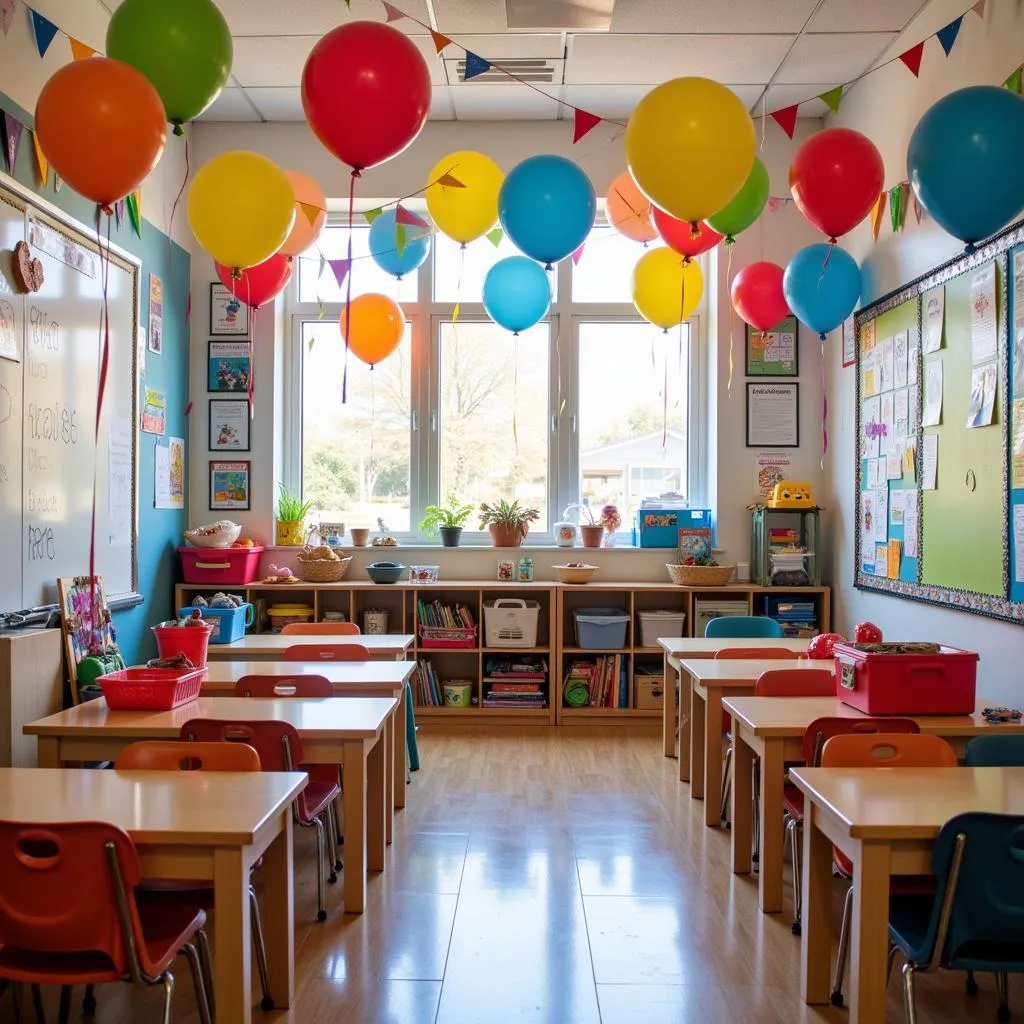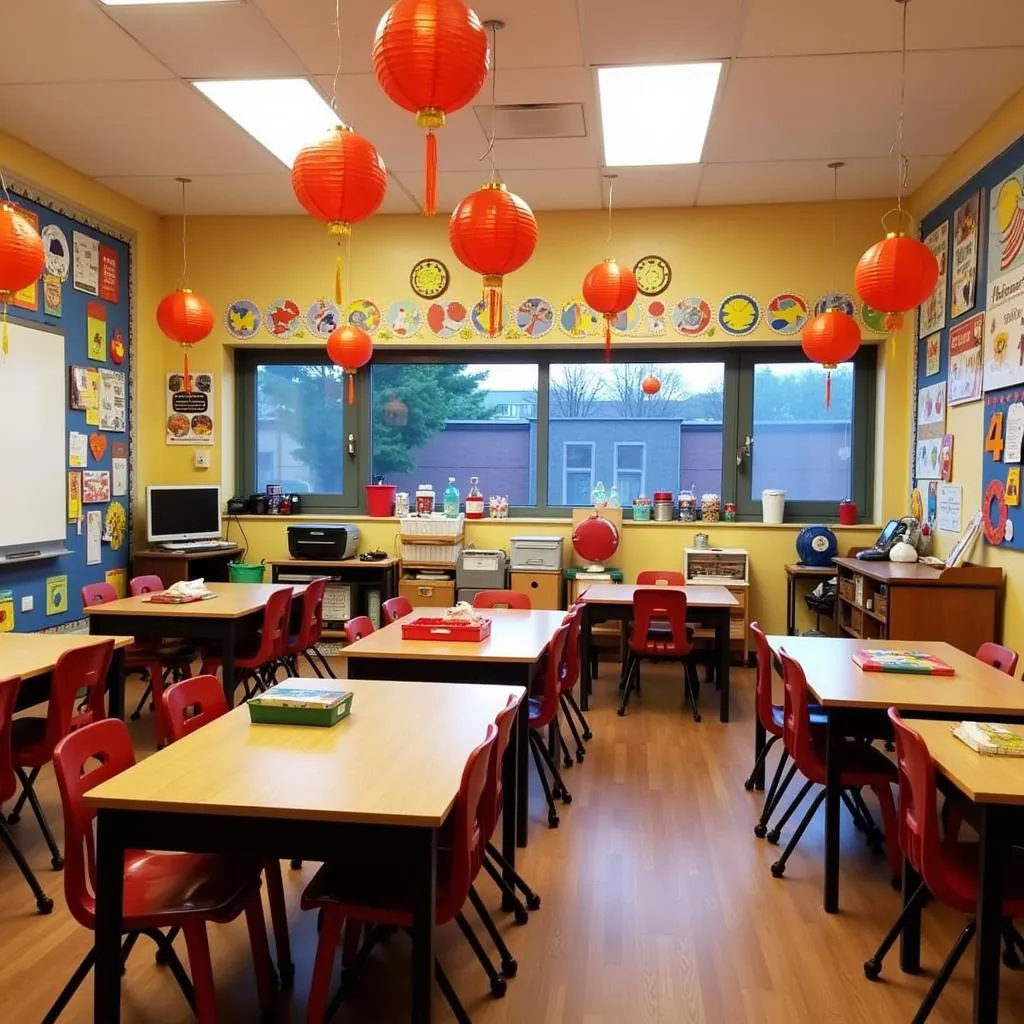“Planting seedlings for the country” is a saying that clearly expresses the importance of preschool education. More than just a place to cultivate knowledge, preschool is also a second home for children, a place that holds beautiful and memorable childhood memories. Therefore, decorating preschool theme boards plays an extremely important role in creating a fun learning environment that inspires children’s imagination and creativity.
Benefits of Decorating Preschool Theme Boards
Creating a Lively and Engaging Learning Space
While the saying “tough as nails” might apply to some situations, for young children, the appeal of learning activities heavily relies on visual elements and colors. Decorating theme boards with cute images and bright, eye-catching colors will help children feel more excited about going to school, eagerly learning without feeling bored.
Supporting Effective Knowledge Acquisition
As our grandparents often said, “A picture is worth a thousand words,” decorating theme boards helps reinforce knowledge in a visual and lively way. Children will easily remember numbers, letters, animals, plants, etc., through beautiful and easy-to-understand illustrations.
Promoting Holistic Child Development
Theme board decorations are highly educational, helping children learn about the world around them, practice observation and recognition skills, and develop imagination and creative thinking. In particular, participating in decorating theme boards also helps children develop independence, teamwork skills, and enhance interaction and communication with friends.
Ideas for Preschool Theme Board Decorations
Decorating by Theme According to Each Month of the Year
This is the most common and effective way to decorate. For example, in September, children will learn about the theme “Back to School,” October is the theme “Mid-Autumn Festival,” November is the theme “Welcoming Autumn,” and so on. For each theme, teachers can choose appropriate images, colors, and activities to decorate the classroom, creating highlights for each season of the year.
Decorating by Educational Themes
In addition to decorating according to each month of the year, teachers can also choose to decorate based on educational themes such as: traffic safety, environment, family, etc. Each theme will provide children with useful knowledge, helping them understand the world around them comprehensively.
Using Recycled Materials for Decoration
To save costs and contribute to environmental protection, teachers can utilize recycled materials such as plastic bottles, milk cartons, newspapers, cardboard, etc., to create unique decorative products that bear the personal mark of each classroom.
Important Considerations When Decorating Preschool Theme Boards
Choosing Appropriate Colors
Color plays an important role in creating a cheerful and comfortable learning space for children. Choose bright, gentle colors that are not too flashy and are suitable for the psychology of young children.
Using Simple and Easy-to-Understand Images
The illustrations on theme boards should be simple, easy to understand, and attract children’s attention. Avoid using overly complex or difficult-to-understand images that may confuse children and hinder their learning.
Connecting Theme Boards with Learning Activities
Theme boards should be connected to children’s learning activities, helping them easily remember knowledge and develop skills effectively. For example, if the theme is “Family,” teachers can combine it with activities such as drawing family portraits or acting out family scenes.
 A colorful preschool theme board decorated with animals and letters, creating a vibrant and educational atmosphere
A colorful preschool theme board decorated with animals and letters, creating a vibrant and educational atmosphere
 A Mid-Autumn Festival themed preschool board with lanterns, rabbits, and mooncakes, celebrating the traditional holiday
A Mid-Autumn Festival themed preschool board with lanterns, rabbits, and mooncakes, celebrating the traditional holiday
Tips for Creating a Fun Learning Space for Children
“Children are the future seedlings of the country,” so creating a fun and well-equipped learning environment is what every parent desires. According to preschool education expert Ms. Thu Ha, author of the book “Nurturing Children’s Souls,” decorating preschool theme boards is one of the important factors contributing to creating a fun learning space that inspires children’s imagination and creativity.
“Decorating theme boards needs to be appropriate for the age, psychology, and needs of children. Prioritize cute images, bright and lovely colors that create a sense of excitement and curiosity for children. In addition, using recycled materials for decoration is also a great idea, helping children learn about environmental protection and develop creative skills,” shared Ms. Thu Ha.